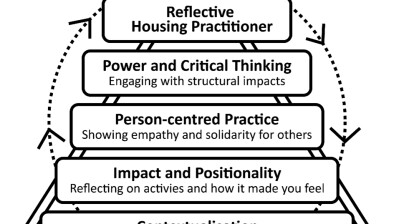Blog: Scottish housing – let’s focus on the big strategy

Scotland needs development to be understood as a net benefit to local communities, says Blair Melville, director at Turley Edinburgh.
2016 sees significant events in the Scottish political and planning landscape.
A new Scottish Government will be elected in May (probably the same as the current government) and the report of the Independent Review of Scottish Planning will await the new ministers. Will these events impact on delivering more housing and other development?
Undoubtedly we do things differently in Scotland – politically, socially and culturally – but the economics of house building are common across the UK, bar some differences in social housing grant.
The planning system has some different mechanical components, but the design of the machine remains similar, so can it be driven in a significantly different direction?
The political rhetoric is different in Scotland, reflecting belief in social justice, community and the public good. The Scottish Government supports planning’s role in delivering these outcomes, in contrast to the Cameron government’s belief in the market to deliver, if necessary by diminishing planning and other regulatory processes.
There are signs that Scottish government ministers, planners and reporters are taking a firmer line on implementing Scottish planning policy’s support for the government’s principal objective of sustainable economic growth. Recent actions around planning guidance, commenting on development plans and, most usefully, clarifying the presumption in favour of sustainable development that contributes to the objective, have sent strong signals to local authorities that planning is about delivery. The review of planning is described as a “root and branch” review.
The Scottish Government wants to innovate. City Deals focus on enabling infrastructure, backed by wider thinking on public infrastructure funding. Land reform could introduce European ideas on land assembly, servicing and development, which aim to spread the risks of development more widely and capture more development value for public good rather than private gain. Increased social housing grant and an increased target for social housing reflect a desire to promote genuinely affordable housing.
However, we need a matching attitude in local government, one that aligns glib sound bites around economic growth, innovation and prosperity with the reality of new development to accommodate that growth. We need development to be understood as a net benefit to local communities, not political suicide for councillors. Most developers will say that only a small minority of authorities genuinely welcomes major growth proposals.
As public resources diminish, I believe the way to deliver more development through planning is to focus on the big picture of strategy, place-making and development delivery, stripping out much of the regulatory clutter and petty political in-fighting that gives planning a bad name. A new government with, probably, an increased majority at Holyrood would then have the opportunity to drive planning in an exciting direction.
This blog was first published by The Planner.







